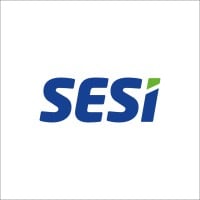
Tel Aviv Muncipality Company Cyber Security Posture
tel-aviv.gov.ilThe Greater Tel Aviv Metropolis has a radius of 60 km which includes 3.2 million people amounting to 43.2% of the Israeli population Municipality Jurisdiction: 52 km2 is 7,606 in Tel-Aviv-Yafo Household and Population: 402,600 residents: 369,184 Jews and 33,416 non-Jews. 56% of households are families, 40% of households are single homes. 75% of the households are connected to the Internet Labor and Employment: total employees 371,700 (13% of all employees in Israel) 36% of the employees are city residents, 56% live in the Greater Tel Aviv Metropolis Segmentation of Employment: 25% business services, 11% commerce and wholesale, 11% banking, finance and insurance 65% of the Tel-Aviv-Yafo residents participate in the workforce Tourism: 70 hotels with close to 8,000 hotel rooms, nearly a million guests and 2.6 million overnight stays Transport: there are 250,000 registered vehicles in the city 250,000 Monthly Income per Household in Tel-Aviv-Yafo (Whose head is an Employee): 17,346 NIS (Gross Income), 10 % higher than the average income in Israel which is 15,712 NIS Housing: 47% are home owners, compared to 69 % home owners in the rest of Israel 73% of all city property tax is paid by business (not residents).During the last decade there was a rise of 59% in the city's income City Council: 31 city council members, 36% resident voter participation Municipality Employees: 7,642 municipal employees and 4,511 employees in the medical center
TAM Company Details
tel-aviv-muncipality
682 employees
1299.0
813
Civic and Social Organizations
tel-aviv.gov.il
Scan still pending
TEL_6427411
In-progress
Between 900 and 1000
This score is AI-generated and less favored by cyber insurers, who prefer the TPRM score.
 TAM Global Score
TAM Global Score.png)

Tel Aviv Muncipality Company Scoring based on AI Models
| Model Name | Date | Description | Current Score Difference | Score |
|---|---|---|---|---|
| AVERAGE-Industry | 03-12-2025 | This score represents the average cybersecurity rating of companies already scanned within the same industry. It provides a benchmark to compare an individual company's security posture against its industry peers. | N/A | Between 900 and 1000 |
Tel Aviv Muncipality Company Cyber Security News & History
| Entity | Type | Severity | Impact | Seen | Url ID | Details | View |
|---|---|---|---|---|---|---|---|
| Tel Aviv Muncipality | Cyber Attack | 100 | 9 | 07/2022 | TEL2322231022 | Link | |
Rankiteo Explanation : Attack that could bring to a warDescription: An Iranian group of hackers managed to break into the Tel Aviv municipality website and took it down. The attackers left a message saying Do not work, it's suspended by order of General Qassem Soleimani,” on the website after the attack. | |||||||
Tel Aviv Muncipality Company Subsidiaries

The Greater Tel Aviv Metropolis has a radius of 60 km which includes 3.2 million people amounting to 43.2% of the Israeli population Municipality Jurisdiction: 52 km2 is 7,606 in Tel-Aviv-Yafo Household and Population: 402,600 residents: 369,184 Jews and 33,416 non-Jews. 56% of households are families, 40% of households are single homes. 75% of the households are connected to the Internet Labor and Employment: total employees 371,700 (13% of all employees in Israel) 36% of the employees are city residents, 56% live in the Greater Tel Aviv Metropolis Segmentation of Employment: 25% business services, 11% commerce and wholesale, 11% banking, finance and insurance 65% of the Tel-Aviv-Yafo residents participate in the workforce Tourism: 70 hotels with close to 8,000 hotel rooms, nearly a million guests and 2.6 million overnight stays Transport: there are 250,000 registered vehicles in the city 250,000 Monthly Income per Household in Tel-Aviv-Yafo (Whose head is an Employee): 17,346 NIS (Gross Income), 10 % higher than the average income in Israel which is 15,712 NIS Housing: 47% are home owners, compared to 69 % home owners in the rest of Israel 73% of all city property tax is paid by business (not residents).During the last decade there was a rise of 59% in the city's income City Council: 31 city council members, 36% resident voter participation Municipality Employees: 7,642 municipal employees and 4,511 employees in the medical center
Access Data Using Our API

Get company history
.png)
TAM Cyber Security News
Check Point to build major new campus in Tel Aviv, tripling global HQ capacity
Cybersecurity giant Check Point announced plans to significantly expand its global headquarters in Tel Aviv by building a new office campus.
Check Point purchases Tel Aviv real estate for $222M to build new campus
The plan includes two residential buildings: a 40-story tower and a 10-story tower, which will together comprise approximately 300 apartments ...
Google's Wiz acquisition highlights record capital raised in Israel's cyber sector
New data shows 56% surge in capital raised by Israeli cyber firms in 2024, despite 37% drop in total exit values, according to Cybertech ...
Cybertech Global TLV: Over 50% Surge in Capital Raised by Israeli Cyber Companies in 2024, Despite Decline in Deal Numbers
Despite the war, capital raised by Israeli cyber companies surged in 2024, reaching $3.79 billion—a 56% increase compared to 2023, when total ...
Check Point to build Tel Aviv campus
אודות גלובס · פרוייקטים ושיתופי פעולה · שיתוף.
Check Point, Israel Canada to buy NIS 800m Tel Aviv site
Check Point will pay NIS 500 million for office space, and Israel Canada will pay NIS 300 million for residential construction land.
Ramat-Gan Municipality - Check Point Software
Our mission is to help secure the largest enterprise, government, and service provider organizations around the world. Filter by Solutions.
Cybersecurity an Privacy Awareness
Cities tend to promote awareness of the importance of data privacy and to get prepared for the impact of cyberattacks, since data will be an important city ...
A crippling cyberattack hit Israel. It was just the beginning
Foreign hackers are targeting local authorities in Israel. There have been more than 100 targeted attacks since October 7, ...

TAM Similar Companies

SESI - Serviço Social da Indústria / Departamento Nacional
Organization supported by Brazilain industries in order to contribute for industrial entreprises competitiveness and susitainability through the promotion of quality of life of industrial workers. SESI offers services on Education, Health, Leisure and Social Responsibility areas. SESI National De

UNION OF KENYA CIVIL SERVANTS
Our Background The Union of Kenya Civil Servants (UKCS) was registered under trade unions act (Cap.233) in August 1959 to represent civil servants of all ranks. It strongly advocated for democracy and provided a channel for effective participation, communication and collective barging process it

Urban Sketchers
Urban Sketchers, also referred to as USk, is a 501(c)(3) nonprofit organization, incorporated in the state of Washington, USA, supporting and representing a grassroots global community of sketchers. Our mission as a nonprofit is to raise the artistic, storytelling and educational value of locatio

ONCE
En ONCE trabajamos por la autonomía y la inclusión de las personas ciegas, con discapacidad visual o de otro tipo. Educación, empleo y ayudas a su servicio. Show more Show less

UEJF
1944. Un groupe d’étudiants juifs issus de la Résistance, dirigé par Dely TECUCIANO, créé l’Union des Etudiants Juifs de France. Sa première vocation est sociale : l’UEJF aide les jeunes Juifs revenus de l’enfer concentrationnaire à se réintégrer dans la vie sociale, en recouvrant notamment leurs dr

Ukrainian Women’s Guard
The Ukrainian Women's Guard is asking you to support our organization and activities. Here is important information about our organization: The Ukrainian Women's Guard has been working as a network of women's resistance movement in Ukraine since 2014 (our site www.uavarta.org) Since February 24,

Frequently Asked Questions (FAQ) on Cybersecurity Incidents
TAM CyberSecurity History Information
Total Incidents: According to Rankiteo, TAM has faced 1 incidents in the past.
Incident Types: The types of cybersecurity incidents that have occurred include ['Cyber Attack'].
Total Financial Loss: The total financial loss from these incidents is estimated to be {total_financial_loss}.
Cybersecurity Posture: The company's overall cybersecurity posture is described as The Greater Tel Aviv Metropolis has a radius of 60 km which includes 3.2 million people amounting to 43.2% of the Israeli population Municipality Jurisdiction: 52 km2 is 7,606 in Tel-Aviv-Yafo Household and Population: 402,600 residents: 369,184 Jews and 33,416 non-Jews. 56% of households are families, 40% of households are single homes. 75% of the households are connected to the Internet Labor and Employment: total employees 371,700 (13% of all employees in Israel) 36% of the employees are city residents, 56% live in the Greater Tel Aviv Metropolis Segmentation of Employment: 25% business services, 11% commerce and wholesale, 11% banking, finance and insurance 65% of the Tel-Aviv-Yafo residents participate in the workforce Tourism: 70 hotels with close to 8,000 hotel rooms, nearly a million guests and 2.6 million overnight stays Transport: there are 250,000 registered vehicles in the city 250,000 Monthly Income per Household in Tel-Aviv-Yafo (Whose head is an Employee): 17,346 NIS (Gross Income), 10 % higher than the average income in Israel which is 15,712 NIS Housing: 47% are home owners, compared to 69 % home owners in the rest of Israel 73% of all city property tax is paid by business (not residents).During the last decade there was a rise of 59% in the city's income City Council: 31 city council members, 36% resident voter participation Municipality Employees: 7,642 municipal employees and 4,511 employees in the medical center.
Detection and Response: The company detects and responds to cybersecurity incidents through {description_of_detection_and_response_process}.
Incident Details
Incident 1: Ransomware Attack
Title: {Incident_Title}
Description: {Brief_description_of_the_incident}
Date Detected: {Detection_Date}
Date Publicly Disclosed: {Disclosure_Date}
Date Resolved: {Resolution_Date}
Type: {Type_of_Attack}
Attack Vector: {Attack_Vector}
Vulnerability Exploited: {Vulnerability}
Threat Actor: {Threat_Actor}
Motivation: {Motivation}
Incident 2: Data Breach
Title: {Incident_Title}
Description: {Brief_description_of_the_incident}
Date Detected: {Detection_Date}
Date Publicly Disclosed: {Disclosure_Date}
Date Resolved: {Resolution_Date}
Type: {Type_of_Attack}
Attack Vector: {Attack_Vector}
Vulnerability Exploited: {Vulnerability}
Threat Actor: {Threat_Actor}
Motivation: {Motivation}
Common Attack Types: As of now, the company has not encountered any reported incidents involving common cyberattacks.
Identification of Attack Vectors: The company identifies the attack vectors used in incidents through {description_of_identification_process}.
Impact of the Incidents
Incident 1: Ransomware Attack
Financial Loss: {Financial_Loss}
Data Compromised: {Data_Compromised}
Systems Affected: {Systems_Affected}
Downtime: {Downtime}
Operational Impact: {Operational_Impact}
Conversion Rate Impact: {Conversion_Rate_Impact}
Revenue Loss: {Revenue_Loss}
Customer Complaints: {Customer_Complaints}
Brand Reputation Impact: {Brand_Reputation_Impact}
Legal Liabilities: {Legal_Liabilities}
Identity Theft Risk: {Identity_Theft_Risk}
Payment Information Risk: {Payment_Information_Risk}
Incident 2: Data Breach
Financial Loss: {Financial_Loss}
Data Compromised: {Data_Compromised}
Systems Affected: {Systems_Affected}
Downtime: {Downtime}
Operational Impact: {Operational_Impact}
Conversion Rate Impact: {Conversion_Rate_Impact}
Revenue Loss: {Revenue_Loss}
Customer Complaints: {Customer_Complaints}
Brand Reputation Impact: {Brand_Reputation_Impact}
Legal Liabilities: {Legal_Liabilities}
Identity Theft Risk: {Identity_Theft_Risk}
Payment Information Risk: {Payment_Information_Risk}
Average Financial Loss: The average financial loss per incident is {average_financial_loss}.
Commonly Compromised Data Types: The types of data most commonly compromised in incidents are {list_of_commonly_compromised_data_types}.
Incident 1: Ransomware Attack
Entity Name: {Entity_Name}
Entity Type: {Entity_Type}
Industry: {Industry}
Location: {Location}
Size: {Size}
Customers Affected: {Customers_Affected}
Incident 2: Data Breach
Entity Name: {Entity_Name}
Entity Type: {Entity_Type}
Industry: {Industry}
Location: {Location}
Size: {Size}
Customers Affected: {Customers_Affected}
Response to the Incidents
Incident 1: Ransomware Attack
Incident Response Plan Activated: {Yes/No}
Third Party Assistance: {Yes/No}
Law Enforcement Notified: {Yes/No}
Containment Measures: {Containment_Measures}
Remediation Measures: {Remediation_Measures}
Recovery Measures: {Recovery_Measures}
Communication Strategy: {Communication_Strategy}
Adaptive Behavioral WAF: {Adaptive_Behavioral_WAF}
On-Demand Scrubbing Services: {On_Demand_Scrubbing_Services}
Network Segmentation: {Network_Segmentation}
Enhanced Monitoring: {Enhanced_Monitoring}
Incident 2: Data Breach
Incident Response Plan Activated: {Yes/No}
Third Party Assistance: {Yes/No}
Law Enforcement Notified: {Yes/No}
Containment Measures: {Containment_Measures}
Remediation Measures: {Remediation_Measures}
Recovery Measures: {Recovery_Measures}
Communication Strategy: {Communication_Strategy}
Adaptive Behavioral WAF: {Adaptive_Behavioral_WAF}
On-Demand Scrubbing Services: {On_Demand_Scrubbing_Services}
Network Segmentation: {Network_Segmentation}
Enhanced Monitoring: {Enhanced_Monitoring}
Incident Response Plan: The company's incident response plan is described as {description_of_incident_response_plan}.
Third-Party Assistance: The company involves third-party assistance in incident response through {description_of_third_party_involvement}.
Data Breach Information
Incident 2: Data Breach
Type of Data Compromised: {Type_of_Data}
Number of Records Exposed: {Number_of_Records}
Sensitivity of Data: {Sensitivity_of_Data}
Data Exfiltration: {Yes/No}
Data Encryption: {Yes/No}
File Types Exposed: {File_Types}
Personally Identifiable Information: {Yes/No}
Prevention of Data Exfiltration: The company takes the following measures to prevent data exfiltration: {description_of_prevention_measures}.
Handling of PII Incidents: The company handles incidents involving personally identifiable information (PII) through {description_of_handling_process}.
Ransomware Information
Incident 1: Ransomware Attack
Ransom Demanded: {Ransom_Amount}
Ransom Paid: {Ransom_Paid}
Ransomware Strain: {Ransomware_Strain}
Data Encryption: {Yes/No}
Data Exfiltration: {Yes/No}
Ransom Payment Policy: The company's policy on paying ransoms in ransomware incidents is described as {description_of_ransom_payment_policy}.
Data Recovery from Ransomware: The company recovers data encrypted by ransomware through {description_of_data_recovery_process}.
Regulatory Compliance
Incident 1: Ransomware Attack
Regulations Violated: {Regulations_Violated}
Fines Imposed: {Fines_Imposed}
Legal Actions: {Legal_Actions}
Regulatory Notifications: {Regulatory_Notifications}
Incident 2: Data Breach
Regulations Violated: {Regulations_Violated}
Fines Imposed: {Fines_Imposed}
Legal Actions: {Legal_Actions}
Regulatory Notifications: {Regulatory_Notifications}
Regulatory Frameworks: The company complies with the following regulatory frameworks regarding cybersecurity: {list_of_regulatory_frameworks}.
Ensuring Regulatory Compliance: The company ensures compliance with regulatory requirements through {description_of_compliance_measures}.
Lessons Learned and Recommendations
Incident 1: Ransomware Attack
Lessons Learned: {Lessons_Learned}
Incident 2: Data Breach
Lessons Learned: {Lessons_Learned}
Incident 1: Ransomware Attack
Recommendations: {Recommendations}
Incident 2: Data Breach
Recommendations: {Recommendations}
Key Lessons Learned: The key lessons learned from past incidents are {list_of_key_lessons_learned}.
Implemented Recommendations: The company has implemented the following recommendations to improve cybersecurity: {list_of_implemented_recommendations}.
References
Additional Resources: Stakeholders can find additional resources on cybersecurity best practices at {list_of_additional_resources}.
Investigation Status
Incident 1: Ransomware Attack
Investigation Status: {Investigation_Status}
Incident 2: Data Breach
Investigation Status: {Investigation_Status}
Communication of Investigation Status: The company communicates the status of incident investigations to stakeholders through {description_of_communication_process}.
Stakeholder and Customer Advisories
Incident 1: Ransomware Attack
Stakeholder Advisories: {Stakeholder_Advisories}
Customer Advisories: {Customer_Advisories}
Incident 2: Data Breach
Stakeholder Advisories: {Stakeholder_Advisories}
Customer Advisories: {Customer_Advisories}
Advisories Provided: The company provides the following advisories to stakeholders and customers following an incident: {description_of_advisories_provided}.
Initial Access Broker
Incident 1: Ransomware Attack
Entry Point: {Entry_Point}
Reconnaissance Period: {Reconnaissance_Period}
Backdoors Established: {Backdoors_Established}
High Value Targets: {High_Value_Targets}
Data Sold on Dark Web: {Yes/No}
Incident 2: Data Breach
Entry Point: {Entry_Point}
Reconnaissance Period: {Reconnaissance_Period}
Backdoors Established: {Backdoors_Established}
High Value Targets: {High_Value_Targets}
Data Sold on Dark Web: {Yes/No}
Monitoring and Mitigation of Initial Access Brokers: The company monitors and mitigates the activities of initial access brokers through {description_of_monitoring_and_mitigation_measures}.
Post-Incident Analysis
Incident 1: Ransomware Attack
Root Causes: {Root_Causes}
Corrective Actions: {Corrective_Actions}
Incident 2: Data Breach
Root Causes: {Root_Causes}
Corrective Actions: {Corrective_Actions}
Post-Incident Analysis Process: The company's process for conducting post-incident analysis is described as {description_of_post_incident_analysis_process}.
Corrective Actions Taken: The company has taken the following corrective actions based on post-incident analysis: {list_of_corrective_actions_taken}.
Additional Questions
General Information
Ransom Payment History: The company has {paid/not_paid} ransoms in the past.
Last Ransom Demanded: The amount of the last ransom demanded was {last_ransom_amount}.
Last Attacking Group: The attacking group in the last incident was {last_attacking_group}.
Incident Details
Most Recent Incident Detected: The most recent incident detected was on {most_recent_incident_detected_date}.
Most Recent Incident Publicly Disclosed: The most recent incident publicly disclosed was on {most_recent_incident_publicly_disclosed_date}.
Most Recent Incident Resolved: The most recent incident resolved was on {most_recent_incident_resolved_date}.
Impact of the Incidents
Highest Financial Loss: The highest financial loss from an incident was {highest_financial_loss}.
Most Significant Data Compromised: The most significant data compromised in an incident was {most_significant_data_compromised}.
Most Significant System Affected: The most significant system affected in an incident was {most_significant_system_affected}.
Response to the Incidents
Third-Party Assistance in Most Recent Incident: The third-party assistance involved in the most recent incident was {third_party_assistance_in_most_recent_incident}.
Containment Measures in Most Recent Incident: The containment measures taken in the most recent incident were {containment_measures_in_most_recent_incident}.
Data Breach Information
Most Sensitive Data Compromised: The most sensitive data compromised in a breach was {most_sensitive_data_compromised}.
Number of Records Exposed: The number of records exposed in the most significant breach was {number_of_records_exposed}.
Ransomware Information
Highest Ransom Demanded: The highest ransom demanded in a ransomware incident was {highest_ransom_demanded}.
Highest Ransom Paid: The highest ransom paid in a ransomware incident was {highest_ransom_paid}.
Regulatory Compliance
Highest Fine Imposed: The highest fine imposed for a regulatory violation was {highest_fine_imposed}.
Most Significant Legal Action: The most significant legal action taken for a regulatory violation was {most_significant_legal_action}.
Lessons Learned and Recommendations
Most Significant Lesson Learned: The most significant lesson learned from past incidents was {most_significant_lesson_learned}.
Most Significant Recommendation Implemented: The most significant recommendation implemented to improve cybersecurity was {most_significant_recommendation_implemented}.
References
Most Recent Source: The most recent source of information about an incident is {most_recent_source}.
Most Recent URL for Additional Resources: The most recent URL for additional resources on cybersecurity best practices is {most_recent_url}.
Investigation Status
Current Status of Most Recent Investigation: The current status of the most recent investigation is {current_status_of_most_recent_investigation}.
Stakeholder and Customer Advisories
Most Recent Stakeholder Advisory: The most recent stakeholder advisory issued was {most_recent_stakeholder_advisory}.
Most Recent Customer Advisory: The most recent customer advisory issued was {most_recent_customer_advisory}.
Initial Access Broker
Most Recent Entry Point: The most recent entry point used by an initial access broker was {most_recent_entry_point}.
Most Recent Reconnaissance Period: The most recent reconnaissance period for an incident was {most_recent_reconnaissance_period}.
Post-Incident Analysis
Most Significant Root Cause: The most significant root cause identified in post-incident analysis was {most_significant_root_cause}.
Most Significant Corrective Action: The most significant corrective action taken based on post-incident analysis was {most_significant_corrective_action}.
What Do We Measure?
















Every week, Rankiteo analyzes billions of signals to give organizations a sharper, faster view of emerging risks. With deeper, more actionable intelligence at their fingertips, security teams can outpace threat actors, respond instantly to Zero-Day attacks, and dramatically shrink their risk exposure window.
These are some of the factors we use to calculate the overall score:
Identify exposed access points, detect misconfigured SSL certificates, and uncover vulnerabilities across the network infrastructure.
Gain visibility into the software components used within an organization to detect vulnerabilities, manage risk, and ensure supply chain security.
Monitor and manage all IT assets and their configurations to ensure accurate, real-time visibility across the company's technology environment.
Leverage real-time insights on active threats, malware campaigns, and emerging vulnerabilities to proactively defend against evolving cyberattacks.




